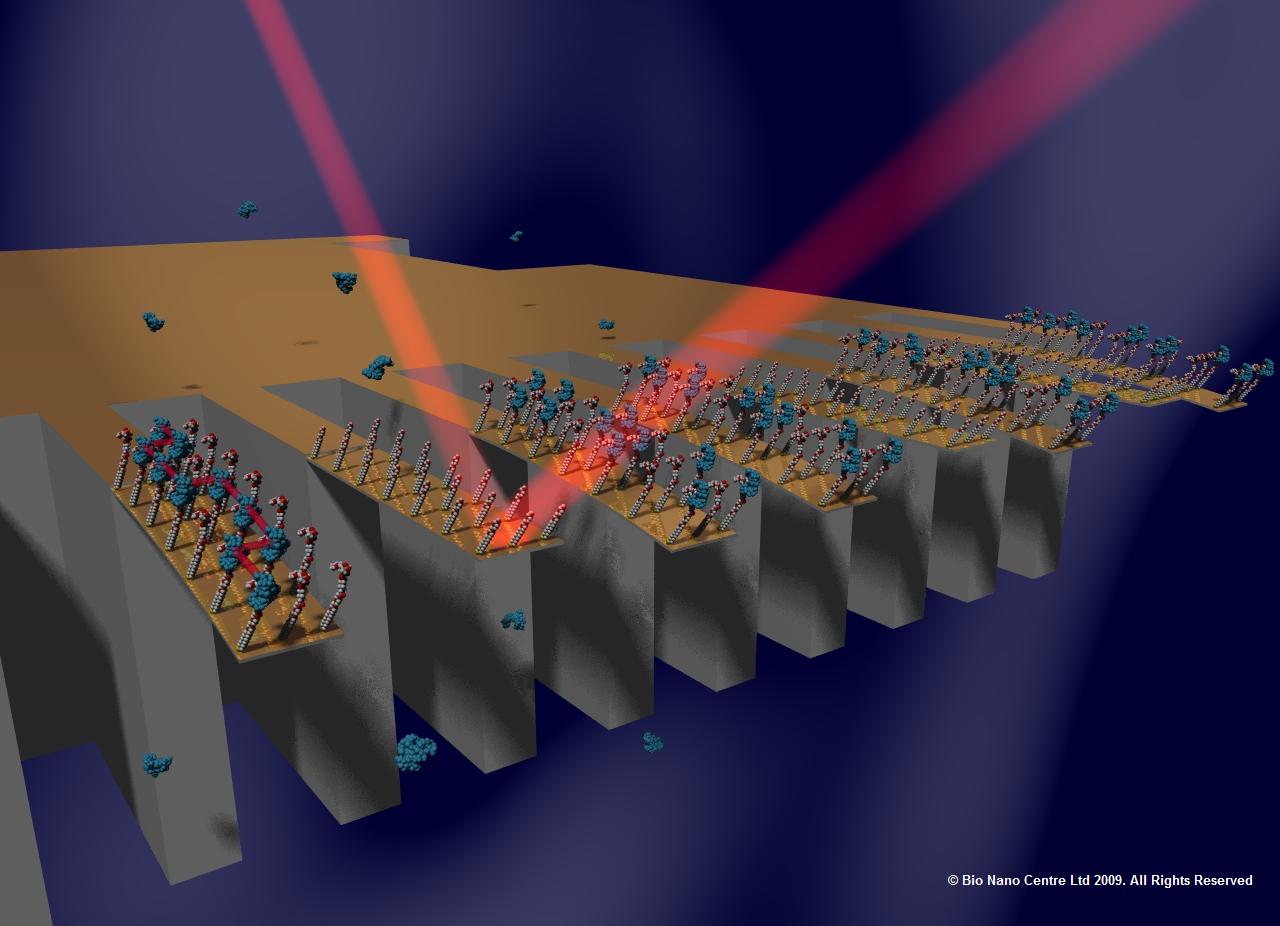Nanocantilevers quantify free antibiotics in blood

BNC collaborators at University College London have developed nanomechanical cantilever sensor arrays capable of quantifying free antibiotics in human blood while confirming the efficacy of the dose. Cantilever arrays are effectively micron-scale “diving boards” fabricated from silicon that bend when a drug being studied binds to a target receptor on the cantilever’s surface. The work, which was recently published in Nature Nanotechnology, uses this highly specialised technology and patented optical read-out system that allow fast and multiplexed detection of the interaction between bacteria surface receptors and antibiotics.
As the amount of antibiotics that bind to serum proteins present in blood varies between individuals, the ability to determine the precise amount of the drug that is free in the blood is important, enabling the accurate calculation of optimum dosage, maximising efficacy and reducing potential toxic effects. “This technology will allow the development of personalized therapies. Overuse of antibiotics can fuel resistance to drugs,” says lead author Dr Joseph Ndiyiera.
Since 2008, Bio Nano Consulting, in collaboration with the US pharmaceutical company Targanta (acquired by The Medicines Company in 2009), has used cantilever array systems to analyse in greater detail the mechanism of action of Targanta’s lead antibiotic, oritavancin, one of the few antibiotics that can be used to combat increasingly resistant infections such as methicillin-resistant Staphylococcus aureus (MRSA).





